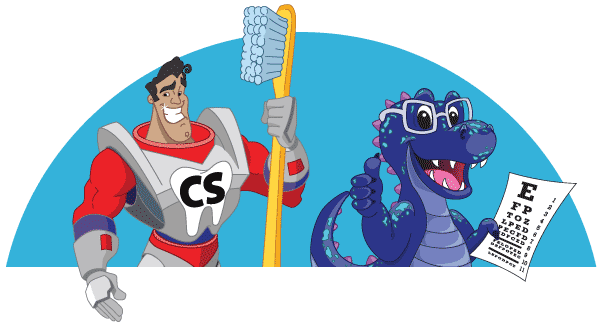Dental Care for Kids
General Safety, Common Treatments and Procedures for Children

While every child we see is unique, there are several common dental treatments that many kids may require throughout childhood. The good news is that these dental services for kids aren’t unusual and treatment is very straightforward. Here’s what you need to know about common dental treatments and procedures for children.
Each time your child visits our office for a dental exam, the dentist will physically examine their mouth, gums and teeth. X-rays are also an important tool that allows our dentist to track teeth development and look for signs of cavities or other diseases that might not be visible with just a visual check-up. We ensure the safety of the children we treat with modern digital X-ray equipment and a lead apron they wear when the X-rays are taken.
Fluoride is a mineral that is important to help protect teeth against decay. Many communities in the United States add it to the water supply. Fluoride in toothpaste helps strengthen the enamel of teeth. Be sure to ask your dentist what toothpaste is best for your child. Another way children can get fluoride is with treatments at their dentist office. This is applied as a mouth rinse, a gel, foam or varnish and adds a layer of protection for your child’s teeth.
Even when kids are good at brushing and flossing, we still might recommend dental sealants to help protect the grooved dips of the molars in the back of the mouth. These grooves, called pits and fissures in dentistry, can be deep and narrow, making it difficult for a toothbrush to reach and clean. Therefore, food and bacteria can get trapped in the pits and cause tooth decay. Dental sealants provide an extra layer of protection by sealing off these deep grooves in molars. We recommend that children get sealants when their 6-year-old and 12-year-old molars come in. Applying a sealant is quick and painless. While they help prevent decay, good daily oral hygiene is always necessary.
- . These are the most common reasons a tooth extraction may be required:To remove a tooth that is infected, severely decayed, abscessed or has incurred trauma to the tooth rendering the tooth too damaged to repair (this term is referred to as unrestorable).
- Oftentimes, baby teeth don’t fall out before the permanent teeth erupt through the gums. If they aren’t aligned, the baby tooth won’t ever loosen so a dentist must remove that baby tooth.
- To prepare and give space for orthodontic treatment.
- When a tooth is too decayed and there is not a restorative option available.
By their nature, children are active. Active children are more prone to chipping or breaking teeth. This is actually a very common issue. Be sure to seek immediate medical attention if your child lost consciousness or has a serious medical injury or condition from the impact that caused a tooth to break or chip. As long as there is not a medical emergency, please contact your dentist as soon as possible.
When our dentist examines your child’s tooth, they will determine the extent of the damage and options for repairing it.
If your child chipped off a tooth, it’s helpful to bring in the tooth fragment or tooth with you to the dentist. Place the tooth or the tooth fragment in a plastic bag along with a few drops of milk or saline so the dentist can see if it the fragment can be reattached, or the tooth can be replanted. Once the dentist examines the chip or fracture, they will determine recommendations for treatment. Options include bonding, a dental crown or a veneer.

